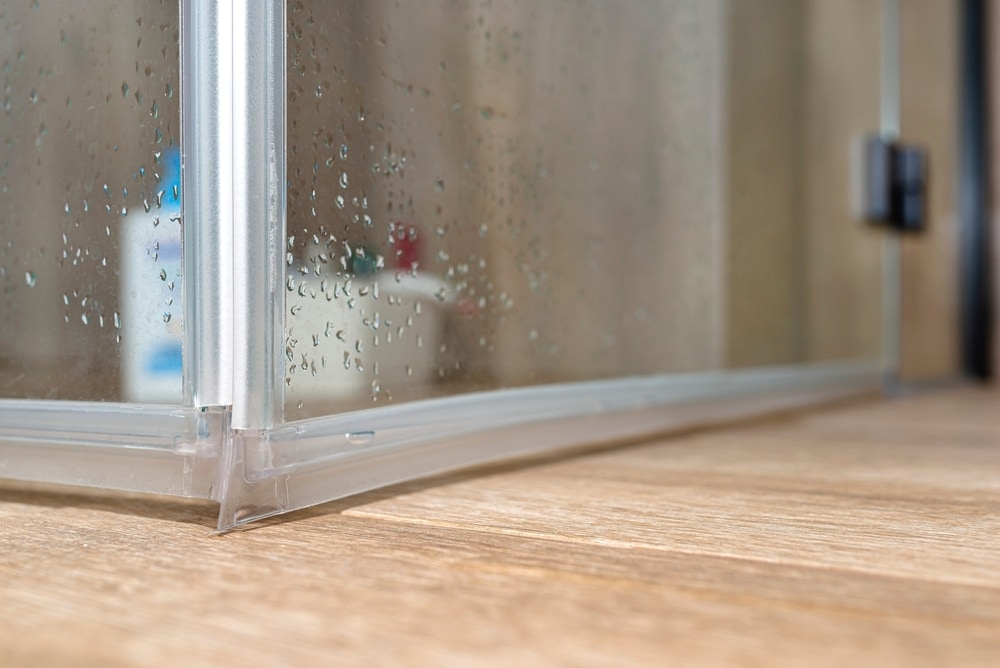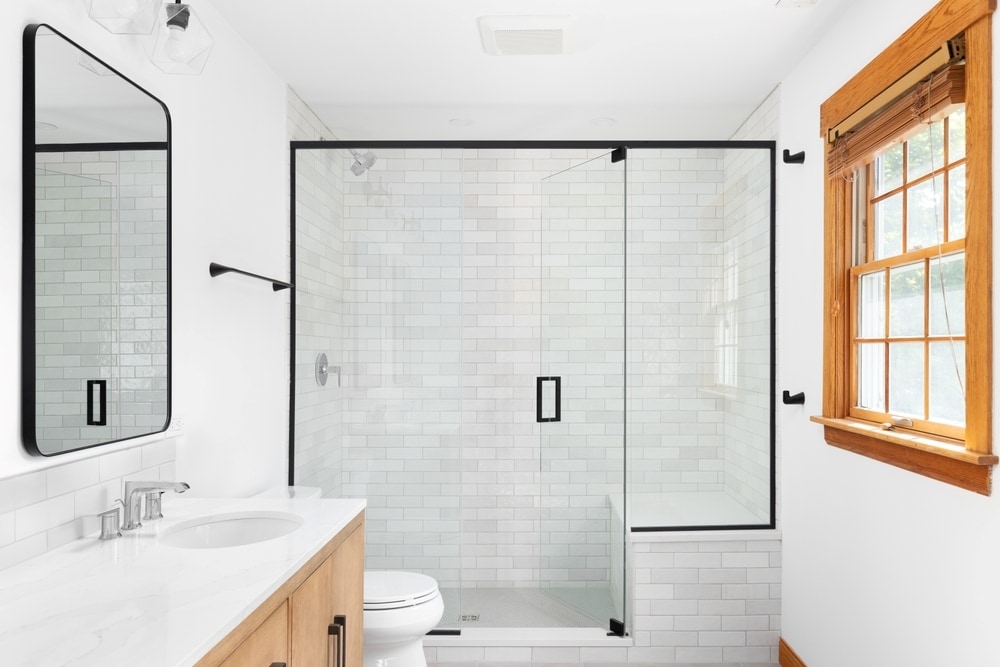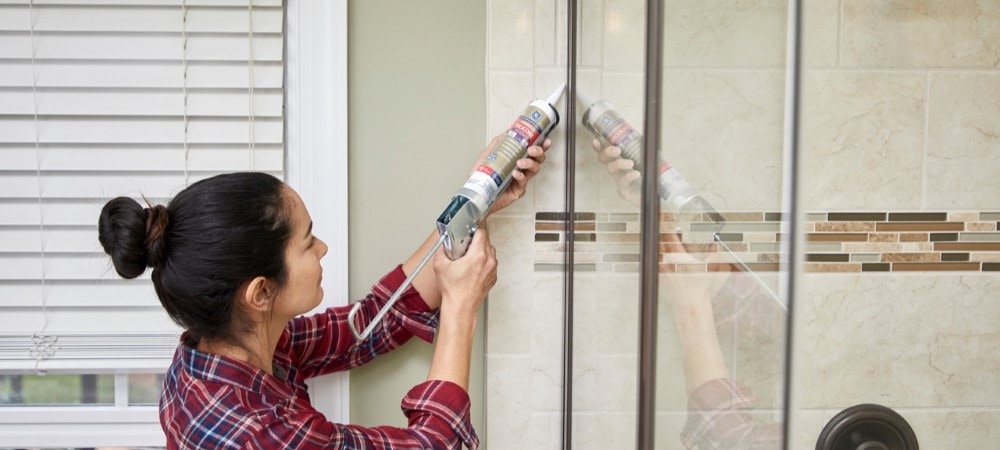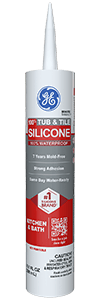Note: This article is a general guide and is not intended to replace product-specific installation procedures; always follow applicable manufacturer’s instructions. Depending on your home’s age and condition, location within the house, and other potential factors, repairs and/or upgrades or other services may be necessary prior to the beginning and/or completion of your project that may involve the services of a home improvement professional. This article does not include advice pertaining to local building codes and/or any related inspections.
There are over a dozen shower doors, meaning over a dozen ways to apply sealant. Learning how to seal a shower door requires first understanding your door’s unique features and how that might impact the process.
We have made this easier for you by breaking down the different shower door types and how to adjust your sealant strategy for each one for the best look and function.
General shower door sealant rules
Before jumping into what makes each shower door unique, there are some universal shower sealant rules. These will apply to all shower door designs you might encounter as a contractor when you seal a shower :
- Use 100% silicone sealant because it’s waterproof and durable.
- Clean the area before applying sealant.
- Seal any areas where plumbing connects with walls and floors as per your local plumbing code.
- Cut your sealant tube at a 45-degree angle and apply using a caulk gun for an even bead.
- Smooth your sealant bead with a gloved finger for a polished finish.
When sealing shower doors, stick with sealants designed specifically for bathrooms. They are both durable and flexible for a longer life. They also work well with the surfaces and materials you might find in the bathroom, like finished metals.
If you want to learn how to fix a shower door seal, you will follow the exact instructions above, but add a step for first removing the old sealant. If the damage on the old sealant is minimal, consider using a silicone refresher rather than redoing the entire seal.
Use silicone sealant and shower sweeps together for the ultimate shower door moisture protection.
Sealing with silicone sealant vs. shower door sweeps
Sealing a shower requires two types of sealants. You will need shower door sweeps and silicone sealant.
A shower door sweep is a long plastic or rubber piece that attaches to your shower door’s sides, top, and bottom. The purpose of a sweep is to move with the door but prevent water leakage from the shower once you close the door.
If you’re looking for how to seal a shower door at the bottom, you will want to opt for a shower door sweep.
Silicone sealant, which you find in a tube and hardens after application, is a sealant you place between two immovable features, like the sides of a wall. The purpose of silicone sealant is to keep moisture and bacteria out of cracks and gaps, which can lead to mold growth.
You can use these two products together for the ultimate shower door moisture protection. First, put on your shower door sweeps along any edges where water might leak out. You can run your shower first to identify those cracks, as you might not need a sweep on every edge. For instance, the top might be too high for water to leak out.
After you put on a sweep, use silicone sealant along the edge of the sweep. The sealant will help hold the sweep in position so it stays in place even with regular use. The sealant also prevents moisture from becoming trapped between the sweep and door, leading to mold growth and early deterioration of the sweep.

How to seal a framed glass shower door
Framed doors are easier to seal because the frame can be your guide. Seal around the door frame where it connects to the shower. There are gaskets available for shower frames, which can help with leakage. If you have gaskets, we still recommend using sealant to help fill in the gaps in the gaskets, as only sealant is 100% gap-free.
After sealing around the frame, move on to the hinges. Seal around the hinges where they connect to the frame, being careful not to seal any areas that might impact the door’s movement.
Before starting on your frame, learn how to install a shower door bottom seal with a sweep so you can finish the sweep with silicone while sealing the frame.
How to seal a glass shower door
Sealing a glass shower door without a frame is less work because there are fewer joints and gaps for water to gather.
You will still have hinges and door sweeps you will want to seal around. You will also want to seal where the glass wall meets the regular bathroom wall.
What makes glass doors unique over most of your other shower doors is that you don’t have a frame, which means the sealant will stand out like a sore thumb. We recommend using a clear sealant along your pristine glass doors.

How to seal a sliding shower door
Sliding doors will not have any hinges to seal. However, they do have tracks they run along.
Seal around the outside of the bottom track. If your top track attaches to a wall or ceiling, you will also seal around the outside of the top track. Keep the sealant outside the track. If you put it inside the track, the sealant will prevent the doors from sliding correctly.
How to seal a pivot shower door
A pivot shower door can move both inward and outward. Because of this broader range of motion, it usually doesn’t have much of a frame, if any.
Treat a glass pivot shower door like the previous frameless door example and use clear silicone sealant around the hinges.
Because pivot doors are usually free-swinging, you most likely have shower walls on both sides of the door. If that’s the case, seal where those walls meet your bathroom walls.
How to seal bi-fold and tri-fold shower doors
You must pay special attention when dealing with shower doors with multiple seams. Open and close the door several times to understand what parts are stationary and which parts fold. You do not want to accidentally seal a movable part of a tri-fold shower door.
Once you understand which parts are moving parts, you can avoid those areas and focus on the hinges and seams where stationary panels meet the wall, if there are any.
How to seal a stationary shower door
Some shower doors are stationary and act as walls rather than doors. If you encounter a stationary shower door, treat it like a regular wall, sealing around the edges where the stationary door meets the wall, floor, and tub.
Have you protected your shower doors against mold, mildew, and bacteria? Take action now by proactively fighting moisture buildup through proper sealing techniques. Use GE Sealant’s high-quality, 100% silicone sealant for a durable, flexible seal that works for all shower door designs.
Find a store near you that carries GE bathroom sealant.


